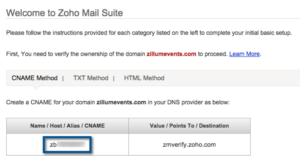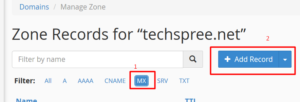How To Setup Zohomail With cPanel And Custom Domain Managed By You

This post will explain Zoho Mail Control Panel. In this article, you pleasure discover how to setup Zohomail with your custom-made domain and cPanel. If you are searching for a complimentary option to Google Apps and want to send out and get e-mails utilizing your custom-made domain then look no more.
How To Setup Zohomail With cPanel And Custom Domain Managed By You
In this article, you can know about Zoho Mail Control Panel here are the details below;
We will stroll you through the entire process of setting up Zohomail with cPanel and customized domain. When we check out the way of using 3rd party mail setup Google Apps is the first thing that come into everybody’s mind. However Google App is a paid service. Zohomail is the best alternatives to Google App. Speaking about options, here are some opensource GitHub Option. Also check contact domain controller.
Steps to setup Zohomail with cPanel and Custom Domain
Confirm your domain ownership with ZohoMail
Initially, you will need to prove that you are the rightful owner of the domain. Also check justhost review.
To verify the domain ownership with ZohoMail,
follow the listed below guidelines:
– Technique 1: Using CNAME confirmation
This is one of the most safe approach however you will need to provide the details in your domain panel.
Login to your Zohomail account and from Control Panel >> Domains click the validate icon (!). It will produce a CNAME code for you.
Go to your DNS supervisor alternative in your cPanel. Now, choose + ADD CNAME RECORD from the shown options.
Put the CNAME worth in the Name/ Host/ Alias/ CNAME field. Depending on your DNS service provider the name of the field will vary. Now in the Worth/ Points To/ Destination/CNAME always put this zmverify.zoho.com. Click SAVE to add the CNAME records.
Now you can validate if you have setup the CNAME record properly or not by visiting CNAMECODE.yourdomain.com.
– Technique
2: Utilizing TXT verification
This is same as the above technique. You will need to generate a TXT code and include it from the DNS zone editor in cPanel.
– Technique 3: Utilizing HTML verification
Numerous will find the above 2 techniques a bit frustrating for this reason I am sharing the HTML verification method. First you will need to download a verification HTML page from the Domain Verification menu in ZohoMail control panel. Now simply upload this page into the root directory of your domain. From cPanel just click “File Internet browser” and go to WWW folder and there you will discover www.yourdomain.com directory. After upload is complete press Verify. Also check domainHostingView alternatives.
After you verify your domain, you will be able to send emails utilizing ZohoMail but you will not be able to get any e-mail. To receive email into your zohomail please follow the last action:
Change MX record to receive e-mail in ZohoMail
To get email utilizing cPanel with Customized domain you must change the MX record in the Zone Editor.
Click Manage choice. Now select the MX tab. Here you will see simply one MX record probably with your own domain.
Click EDIT and change its concern to 40.
Add Zohomail MX record to get mail
Now what we will do is simply add Zohomail record here. Click the ADD RECORD choice and stay in the MX tab. Inspect the following screenshot for better understanding:
In the NAME field just type your domain following by dot(.). For instance, www.yourdomain.com. the dot in the end is important.
TTL 14400 leave it as it is.
From TYPE choose MX
In the priority field, type 10
In the destination field, input mx.zoho.com
To make it stop working safe, you will wish to include two more backup mx records with concern 20 and 30 whereas destination should be mx2.zoho.com and mx3.zoho.com respectively.
Now you are all set. Now you can both send out and receive e-mails using your custom domain. We utilized cPanel for the entire process. Zoho is complimentary for approximately 10 users. So for personal e-mail use, this is more than enough. Also check godaddy review.






